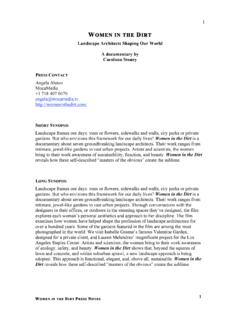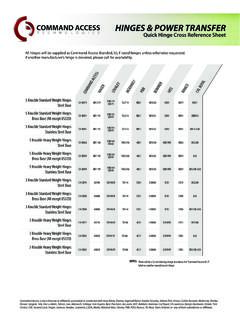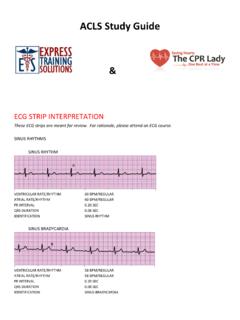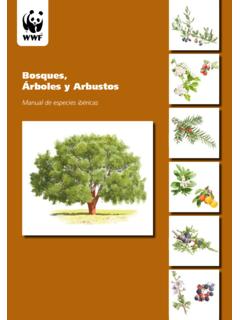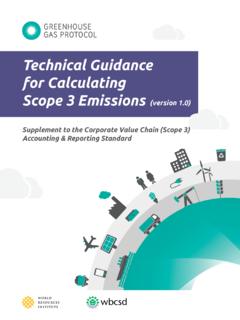Transcription of Making credible renewable electricity usage claims - Virb
1 Technical Advisory Group Briefing 1 Making credible renewable electricity usage claims Authored by RE100 Technical Advisory Group members: JARED BRASLAWSKY, TODD JONES AND MARY SOTOS | April 2016 Foreword The RE100 Technical Advisory Group provides RE100 companies with best practice guidance on the use of renewable power, to help them progress their journeys to being 100% powered by renewable electricity . Group members are energy experts working for a number of leading non-profit organizations and initiatives. Introduction Companies can make a variety of statements about renewable electricity (RE) relating to its development, generation, use, and environmental and social benefits and impacts. But the ability to demonstrate and claim use or delivery of RE on a shared electricity distribution network, or grid , requires the support of markets and contractual instruments that meet specific criteria to be credible .
2 This briefing note provides a set of criteria that RE sources and purchasing mechanisms must meet in order to support credible RE usage and delivery claims . These criteria can be applied across a range of local electricity market conditions and RE market development levels. This briefing also provides guidance for verification, reporting, and communication of RE use. 1. Claiming use of renewable electricity RE usage claims are claims by a specific grid customer or group of customers to be receiving or consuming RE, and/or claims by a supplier or distributor to be delivering or supplying RE to a specific grid customer or group of customers. In other words, these are an electricity user s claims to specified renewable generation. For example: Our company uses renewable electricity . Our company uses wind energy to make this product. This facility is solar powered. This group of customers is receiving renewable electricity .
3 We procured renewable electricity for all our operations. Making claims around the use of RE requires the defining of renewable attributes of generation, or that which defines the manner of production as renewable . Attributes include everything that identifies the generation source and all non-power outputs, including the fuel Technical Advisory Group Briefing 2 type, location, greenhouse gas (GHG) emissions and the other environmental and social impacts and benefits of the electricity generation. Defining and allocating generation attributes contractually is essential since physical electricity is indistinguishable based on how it was produced and untraceable on a grid with many different connected generation sources. In other words, generation attributes are not physically delivered or knowable, and use of specified electricity on a shared grid can only be determined contractually. Therefore, Making credible RE use claims depends largely on effectively tracking RE attributes, verifying exclusive delivery by generators and suppliers, and verifying exclusive ownership of attributes by grid customers buying RE.
4 Markets for attributes and certificates Allocating RE generation to specific grid customers requires contractual instruments to convey attribute information from generation to end-use. These contractual instruments make specified-source purchasing on the grid credible and verifiable. The ability of consumers to know and choose the sources and attributes of their electricity is the underlying premise of most market liberalization and electricity supplier disclosure rules, and allows consumer demand to influence RE supply over time. Energy attribute certificates are a type of contractual instrument that fulfills these functions, but other instruments may also be used. - Energy attribute certificates: These are the most sophisticated of these instruments. Energy attribute certificates, or just certificates , embody the generation attributes of one megawatt-hour (MWh) of RE. Certificates not only make attribute ownership verifiable, they also make attributes easily tradable they enable markets for generation attributes.
5 These markets for generation attributes or certificates commonly called renewable energy markets are used by grid consumers to substantiate claims to RE. In this case, where the certificate instrument meets the quality criteria explained in this document, certificate ownership (or certificate retirement on one s behalf) determines a credible RE usage claim . Examples include the North American renewable energy certificate (REC) and the Guarantee of Origin (GO) in Europe. - Other contractual instruments: credible RE usage claims may be possible in areas without established attribute certificate markets using other contractual instruments and arrangements between generators and/or suppliers and individual users. This is possible providing there is sufficient verification that the transfer of attributes is legally enforceable within the context of existing electricity and RE policies and legal frameworks, and that there is no existing or other claim on the generation or attributes.
6 For example, in some countries where differentiated electricity product options are not available for most consumers, certain large electricity consumers may nevertheless be able to buy directly from a local generator or make special arrangements with the electricity supplier to purchase specified source electricity . In this case, delivery and ownership of the attributes may be specified as a part of a contractual arrangement, along with verification against claims by other parties to support a RE usage claim . Technical Advisory Group Briefing 3 Off-grid RE use Where a company is not connected to the grid but is using RE through a direct connection with a RE generator that is not connected to the grid, verification of the attributes of the RE is required to make a credible claim . Where electricity cannot be differentiated and generation attributes cannot be contractually delivered, and off-grid use is not feasible, grid customers may only be able to claim the grid average or default mix of generation attributes, which may include some portion of RE.
7 Also, in these cases, other claims (other than standardized RE usage claims , for example about social or environmental impacts) may be possible depending on what arrangements can be reached between the government, generator, supplier, and consumer, and what attributes can be verifiably delivered and owned. In many cases, general claims to be supporting RE can be made. GHGs from purchased electricity (Scope 2) claims Companies increasingly purchase RE in order to claim the use of low or zero-emissions electricity and thereby reduce their carbon footprint. Most RE sources/technologies, including wind, solar, geothermal, hydropower, ocean, and others, do not directly emit GHGs to generate electricity1. RE procurement therefore allows the consumer to claim to be using zero-carbon electricity , and thereby reduce the portion of their carbon footprint associated with purchased electricity . The emissions associated with purchased electricity are categorized as Scope 2 emissions by the World Resources Institute s (WRI s) and World Business Council for Sustainable Development s (WBCSD s) Greenhouse Gas Protocol Corporate Standard2.
8 The Scope 2 Guidance revision to the Corporate Standard requires companies to report Scope 2 emissions according to two methods: location-based, using grid average emission factors; and market-based, using supplier and product specific emissions factors. The latter will be contractually defined and in certain markets based on certificates for RE, either bought separately from electricity , delivered through an electricity supplier s product, or consumed from on-site generation. Each of these methods represents a way of allocating emissions to consumers. Under the location-based allocation methodology, the consumer has no choice as to specific attributes and is required to report the average of all attributes within a geographic grid in which they consume electricity an emission factor called the grid average . Contractual attribute allocation (and within this, energy attribute certificates) allows individual electricity consumers choice of electricity products and attributes.
9 1 For RE usage claims , RE100 considers renewable the electricity generated from biomass (including biogas), geothermal, solar, water and wind energy sources. This definition includes sources like biomass that are renewable , but not zero carbon. In order to also make valid zero scope 2 emissions claims in accordance with the GHG Protocol, electricity shall be both from renewable sources and emissions-free at the point of generation. 2 Greenhouse Gas Protocol, WRI & WBCSD, viewed February 01 2016, Technical Advisory Group Briefing 4 GHG emission attributes - Direct GHG emissions factor All electricity production has an associated GHG emissions factor, expressed in metric tons of carbon dioxide-equivalent (tCO2e) per MWh of generation (tCO2e/MWh). For most renewable electricity generators the calculation of the emissions factor is straightforward since, with the exception of biomass, there are no onsite GHG emissions they have an emission factor of 0 tCO2e/MWh at the point of generation (upstream emissions associated with fuel, technology or transmission and distribution losses are accounted and reported in Scope 3).
10 - Avoided grid GHG emissions In addition to the GHG emissions factor, which is used for Scope 2 calculations and claims , there is typically a second GHG attribute ascribed to RE generation: the GHG emissions avoided on the grid as renewable generation displaces emitting generation ( avoided grid emissions ). Every generation facility on a given grid exists within a dispatch order established by the grid operator, and any MWh of energy generation from a given facility, be it renewable or not, as well as energy conservation or efficiency interventions that avoid generation, can be analyzed in terms of its relationship to, and impact on, other emitting facilities on the grid. Therefore, in certain markets and circumstances, RE purchasers can claim that the generation of their electricity displaced or avoided the need for an equivalent MWh from emitting power plants on the grid. Quantifying this benefit involves establishing what emitting resources were likely displaced by the renewable generation and calculating emissions avoided using the emissions factor of those resources.


